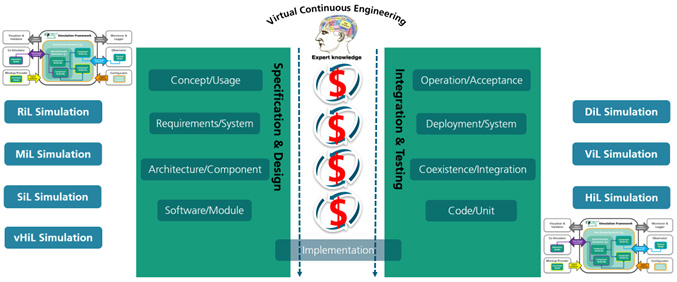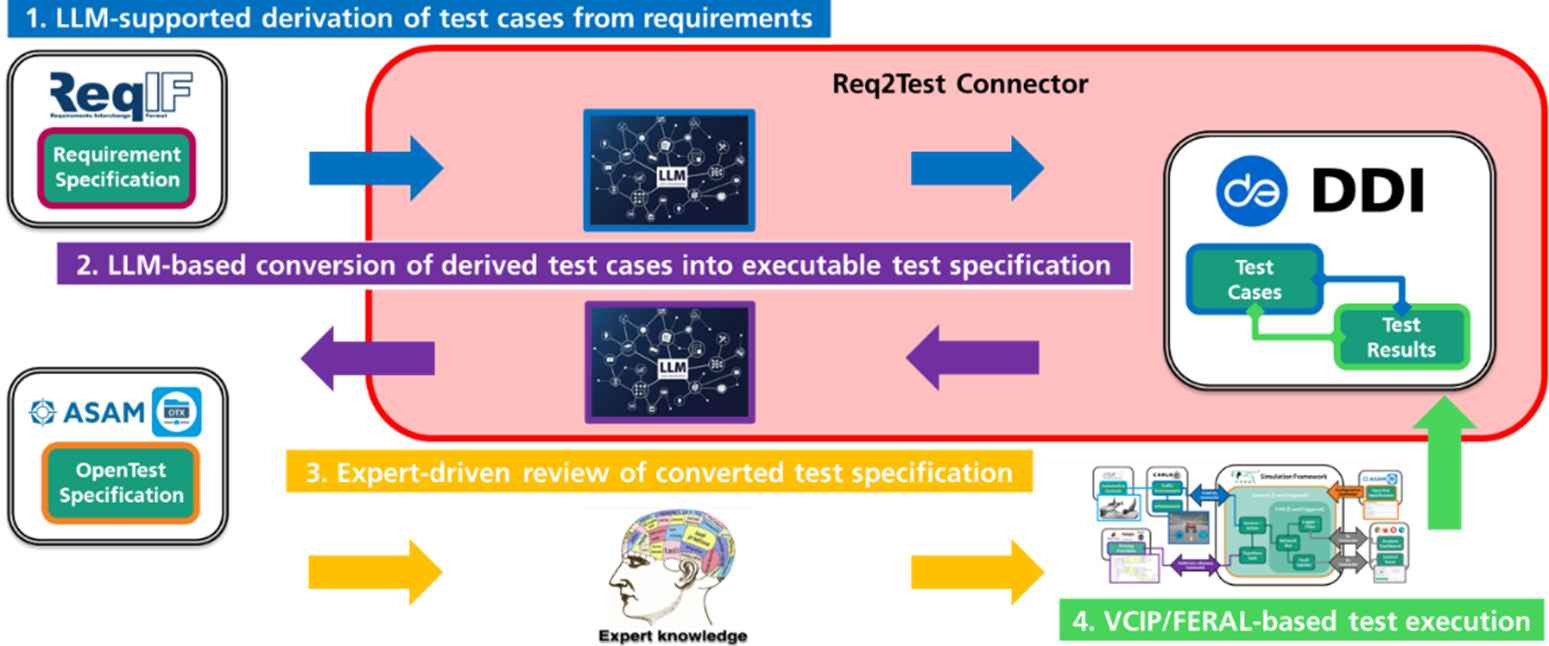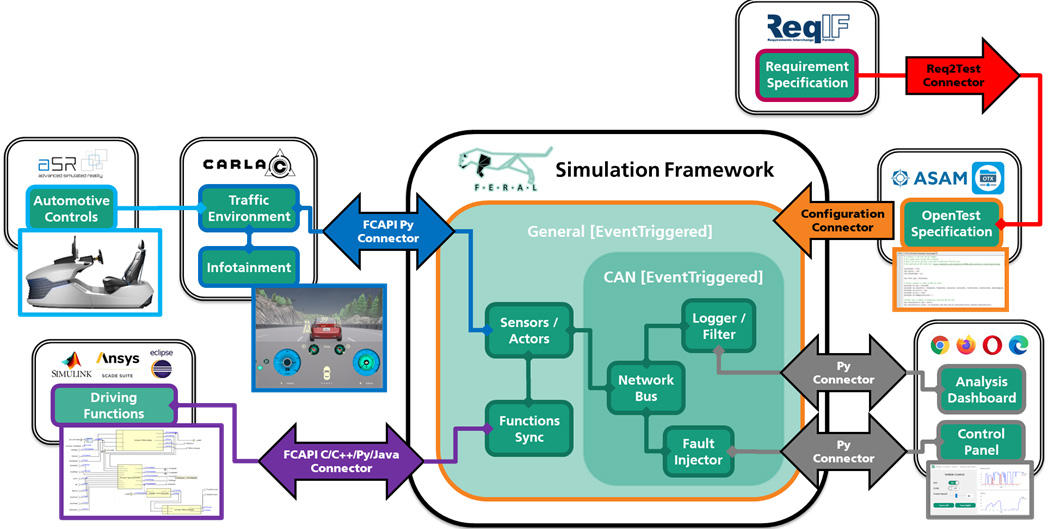Our solution concept defines 4 steps to increase efficiency in virtual system evaluation based on VCIP/FERAL and the use of AI technology (see Figure 2):
1. LLM-supported derivation of test cases from requirements
A pre-trained large language model that has been fine-tuned for this task (fine-tuned LLM) is used to automatically generate test case descriptions on the basis of textual requirements that are available in the standardized OMG ReqIF format. These descriptions are stored in a structured form using DDIs (Digital Dependability Identity) for the purpose of formal traceability.
2. LLM-based conversion of derived test cases into executable test specifications
Derived test case descriptions are automatically converted into standard ASAM OpenTestSpecification (XOSC/OTX) formats using another fine-tuned LLM, whose integration into the virtual test bench is supported by a VCIP/FERAL connector extension. This drastically reduces the effort required for the design and implementation of executable test cases and qualifies the virtual test bench for the use of ASAM-compliant tool chains. 3. Experten-basierte Überprüfung der LLM-konvertierten Testspezifikation
3. Expert-based review of the LLM-converted test specification
Test engineers review the converted test specification, adapt it as required and release it for execution on the virtual test bench. This step ensures that the suitability and correctness of the test specification is not impaired by the use of AI, because ultimately subject matter experts check the content again for plausibility and executability, but without the initial effort that recurs in every development iteration.
4. VCIP/FERAL-based test case execution
The approved test specification, including the test case instances, is executed in the virtual test bench for the current product increment using the VCIP/FERAL connector extension and the corresponding test results are generated. This evidence is in turn automatically linked to the associated development artifacts such as requirements and architecture descriptions using DDIs and is then used to make decisions for the next development iteration.
Embedding this extension for the verification and validation concept in the product development process enables a drastic reduction in manual effort, because the majority of test cases are already available for execution within a very short time, allowing test engineers to focus their expertise on plausibility checks and special cases rather than on recurring, time-consuming preparation of test artifacts.




